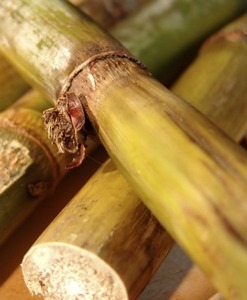Jan 28 2011
Havana Energy, a division of the Esencia Group, has entered into a partnership with Zerus for developing a 30 MW pilot power plant at Ciro Redondo Sugar Mill, located around 400 kms from Havana. This project would be used as a model for the development of other power plants.

Currently in Cuba 7% of its energy requirements are supplied from renewable energy sources. The Government of Cuba is keen to increase the renewable energy generation and reduce the country’s reliance on fossil fuels. Brian Wilson, Chairman of Havana Energy and former Energy Minister in UK, stated that he was happy to be involved in such a project that would develop closer economic ties between Cuba and the UK. He further mentioned that Cuba was known for its promotion of a sustainable environment along with a stable electricity generation. This project would take care of both the objectives. He also stated that he had great respect for the objectives and abilities of his Cuban Colleagues.
The National Electricity Board along with the Ministry of Sugar have developed a plan for enhancing power generation in all its sugar mills in use, to aid decentralization of the grid and also help in providing power for areas, which have a weak supply. The Vice-Minister of Sugar, Nelson Labrada revealed that this strategy of generating power by using sugarcane bagasse, which was available in plenty thereby solving the major problems faced by other biomass sources. Bagasse is the residue fiber left behind after cane is crushed. Cuba has the potential to generate up to 40% energy from bagasse-based power units. The capital outlay for the plant is expected to offer an investment return inside five years.
In November 2010, a team consisting of leading Scottish academics came on a visit to Cuba supported by Havana Energy and SDTI, primarily to investigate renewable energy crops, in particular Marabu, a shrub growing prevalently in a 2.47 million acre region, and also to gain knowledge about the sugarcane industry and the new varieties of energy cane having a high fiber content that were genetically developed in Cuba. Julian Bell of the Scottish Agricultural College, commented that the idea of converting bagasse for electricity generation was an excellent one and even the Marabu could be employed as a renewable energy source as a secondary biomass source. This shrub could be a potential source of export. At present, Marabu was undergoing tests in the UK laboratories where its properties are being investigated. According to Martin Tangley, Biofuel Center’s Director, this was one of the most efficient forms of renewable energy and after this concentration should be on extracting biofuels from other waste products coming from the sugarcane.
A Strathclyde University Professor of Energy Storage, Peter Hall, along with Havana Energy is planning to begin a study in 2011 spring, taking a look at the design process in the sugar industry. An investigation was also being carried out for assessing the possibilities of production of activated carbon from the biomass products in Cuba.